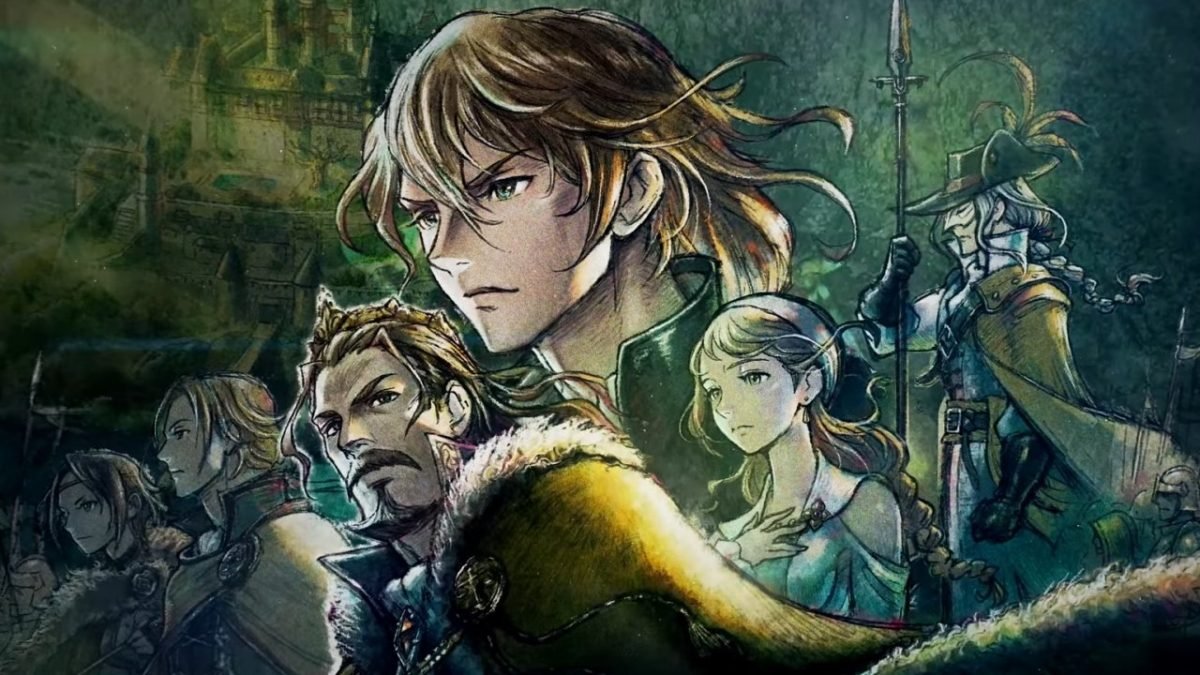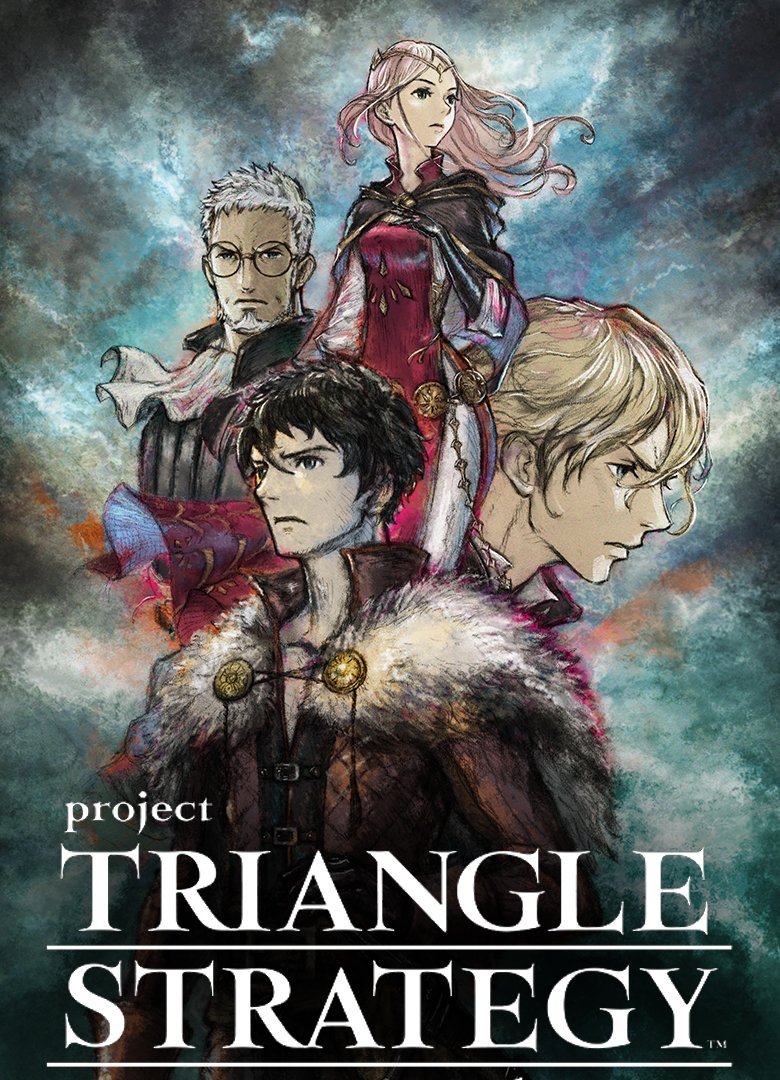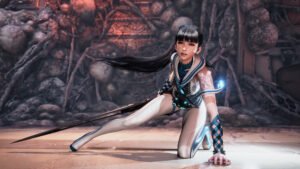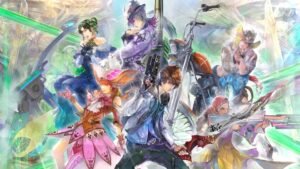Ever since I was a young gamer, I have loved RPGs—but when it came to turn-based RPGs, I couldn’t get my head around it. Maybe I was too accustomed to real-time strategy that when I played Advance Wars for the first time, I was playing by a completely different set of rules, and it never worked out.
As I got older, and began to understand that some things aren’t other things, I began to fall in love with the genre; Fire Emblem: The Sacred Stones being my first foray into the genre in earnest, and I immediately loved it’s combination of RPG sensibilities, and chess-level strategy. So, when I saw Triangle Strategy announced during the Feb 2021 Nintendo Direct, I was initially intrigued.
Although, I’ll admit I became a bit more skeptical of this game when—like Octopath Traveler before it—it was lazily titled: Triangle Strategy, which you may remember was initially its “working title.” From there, things got even more questionable as I was met with a game that had some interesting ideas, but was not quite sure how to make them into a completely fun experience.
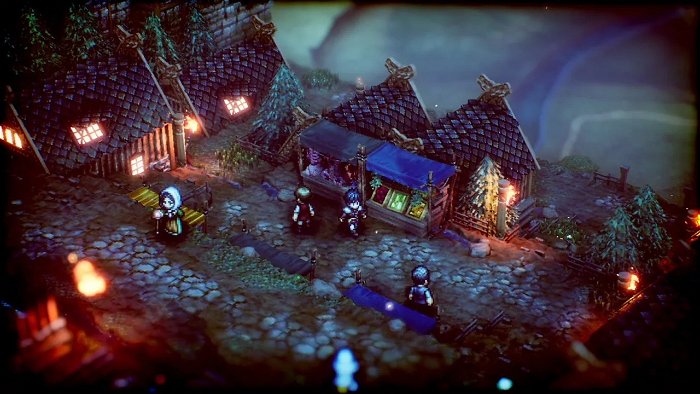
The story takes place in the realm of Norzelia, which is separated into three realms—like a triangle, you see. In the north, Aesfrost controls the iron; in the east, Hyzante controls the salt; and in the west, Glenbrook mitigates trade amongst the realms. After a long and bloody war called the Saltiron War, the realms finally achieved peace, but many years later, tensions are rising, and the land once again finds itself in turmoil.
“As far as stories go, it’s really not too bad—with a pretty solid amount of intrigue and some dark, Game of Thrones level plot turns…”
Players take on the role of Serenoa, a young lord who becomes swept up in a grand adventure of politics and combat, and whose actions and decisions will decide the fate of all of Norzelia. As far as stories go, it’s really not too bad—with a pretty solid amount of intrigue and some dark, Game of Thrones level plot turns—but there’s one crucial problem: there’s WAY too much of it.
I tried to keep that description of the plot brief, because you’re bombarded with so much information about houses and factions, and lords and ladies, and the complex politics of salt tariffs and iron trade; that trying to describe the early plot points that set the game in motion would’ve required at least five paragraphs.
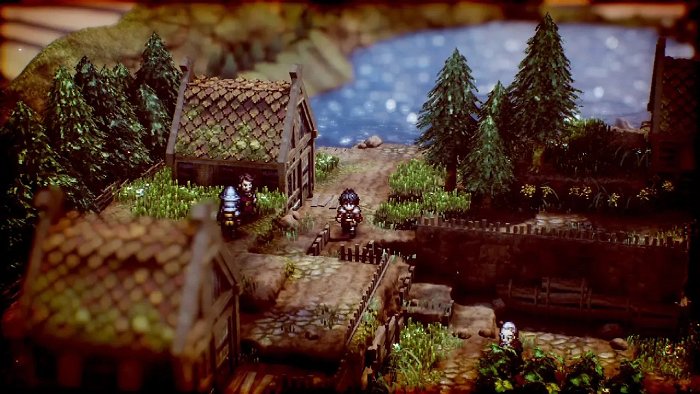
Furthermore, that’s probably about as much as I can remember because not only is there far too much exposition; it’s delivered in the most dry, monotonically-read “voice acting,” possible that on more than one occasion, I found myself glazing over, and falling asleep in my chair. It’s got that very anime-esk style of story-telling where something that could be explained in one scene, needs two extra to go over, which makes it all the more frustrating to experience.
Also, and this might just be a personal gripe; but all the dialogue is written in 16th century English, which makes it even more roundabout and dry—when a simple line like “in any case, we’ll figure it out later,” is delivered like, “in any event, we shall make preparations on the morrow.” Truthfully, I found myself enjoying the dialogue much more when I switched to the Japanese voice option, as the characters actually sounded like there was emotion and depth to what they were saying.
What’s even stranger is how a lot of the story is structured. Much like Fire Emblem or Wargroove, the game has a world map with Main Story and Side Stories dotted on the map. But unlike those aforementioned games, when missions appear on the map they don’t always involve gameplay. So, you’ll sit through a long dialogue sequence, just to be sent to the map in order to select the next. It makes the drawn-out dialogue far more noticeable and dry because, unlike Fire Emblem or Wargroove, there’s nothing in-between to break up the monotony; and it’s not woven together cohesively.
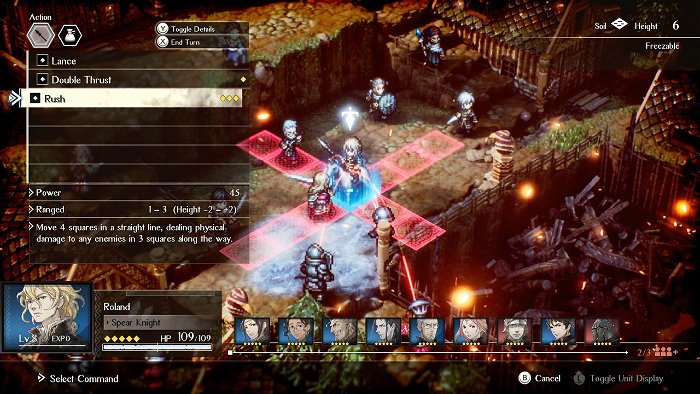
What felt even more bizarre is how the game tells you that Side Stories are optional, but then follows it up by saying they’ll disappear forever if you progress the story, so you’re strong-armed into sitting through the monotonous dialogue, lest you potentially miss something important. And while I’ll admit, as the game goes on, it does start to mix up the dialogue-to-gameplay ratio, it still feels pretty imbalanced at times.
However, when gameplay does happen, it’s a bit of a mixed bag. For starters, within the dialogue sequences, there will be moments where Serenoa can respond to certain questions with Liberty, Utility, or Morality; with the way you respond potentially influencing the way characters act towards you later in the plot. However, I’m not fully convinced this is true, as there was one moment when I noticed something strange in the dialogue. After an early choice of where I was to visit either Aesfrost of Hyzante, I decided to go to Aesfrost and meet it’s Archduke—Serenoa’s fiancé’s brother—and get an understanding of the land.
In a later scene, when the Archduke decides to invade Glenbrook, he greets Serenoa and his party as if it was the first time they had met—he doesn’t even call him by his name. It felt very much to me like the scene was written to potentially take into account if the player chose Hyzante instead of Aesfrost; and more so, made me feel like my choice to go there, which I wrestled with for 10 minutes, was pretty meaningless.

Combined with the dialogue sections are exploration sections which will allow you to survey your surroundings as well as gather useful information that can be used for dialogue prompts, or the aforementioned “Voting sections,” where crucial decisions are split between the party, and the player can choose to persuade members towards their decision. Whatever you decide in dialogue—as well as completing battles—will “strengthen Serenoa’s convictions,” but I honestly have no idea what this means, since the game literally says, these are invisible parameters, which is particularly confusing when you get the prompt during or after a battle.
Supposedly it has something to do with how easy it is to persuade your allies during Voting sequences, and it also influences which characters join your roster; but that really seems like something the game should tell you—instead of some commenter I found on the Triangle Strategy Wiki.
Lastly is the battle system, which I will admit is definitely the highlight of Triangle Strategy, and the part I enjoyed the most; but it too is a bit of a mixed bag. While it’s reminiscent of Fire Emblem in terms of style, there are interesting elements that distinguish it from others, and add a unique layer of challenge. Unlike most turn-based strategy games, turns aren’t split between Player and Enemy phases—instead structured like an RPG, where everyone’s turn is determined by those with the higher speed stats.

Combat in Triangle Strategy also implements other interesting elements: like how you can combine elemental magic attacks for devastating new attacks—fire attacks can melt ice or snow to create puddles that generate lightning, or how wind can spread fire around. Special attacks aren’t determined by a mana bar, but by TP (tactical points) that are replenished with each turn, and there’s an interesting system where players have to set their position at the end of each movement turn, since any hit from behind counts as a critical.
Furthermore, there’s a diverse and interesting cast of characters, each with different abilities and roles within battle, and so far no two characters have felt alike. From the Hawkbow Hughette, who rides on the back of a giant hawk to snipe from any position on the battlefield; to the Advisor Julio, who combines solid sword-prowess with the ability to steal TP from enemies; each character feels unique and brings a lot to the battle. If there’s one complaint I have with the characters though, it’s how unceremoniously some of them join you.
“Maybe I just hold too bright a flame for Fire Emblem…”
While some characters will join your roster as part of the story, sometimes you’ll be informed that there are characters waiting at your encampment, and after a brief introductory cutscene, they’ll have joined your team. Maybe I just hold too bright a flame for Fire Emblem, but I think it would’ve been much more engaging if they showed up with each new battle, and gave you a chance to get to know them, and feel them building a report with your team.

Despite its infrequency, I genuinely found myself getting into the combat. However, I will admit, it can sometimes feel a bit clunky. For starters, camera control can feel a bit awkward, as you have to navigate around certain terrain and obstacles; and, combined with the 2D sprites, can make pinpointing which way enemies are positioned a bit difficult. Also, the HUD is a bit messy and awkward, specifically the turn-order bar—which only shows nine units, and can reorder wildly based on which unit you highlight in battle.
I also noticed a weird visual glitch where sometimes the health-bar that is displayed above characters during attack animations would just disappear, which made it very hard to visually keep track of how close a character was to death, as multiple enemies closed in on them.
But as I mentioned earlier, the combat—for as interesting as it could be—is so few and far between the long, drawn-out dialogue sequences, that it’s barely any fun when you play it. Most sessions I had with Triangle Strategy, for about an hour of gameplay, I maybe had one combat encounter that lasted maybe 15 minutes. So the game just ends up feeling really imbalanced—which was immediately noticeable when I approached my third battle of the hours I had been playing, and the recommended level was four, and everyone in my party was a measly level two.
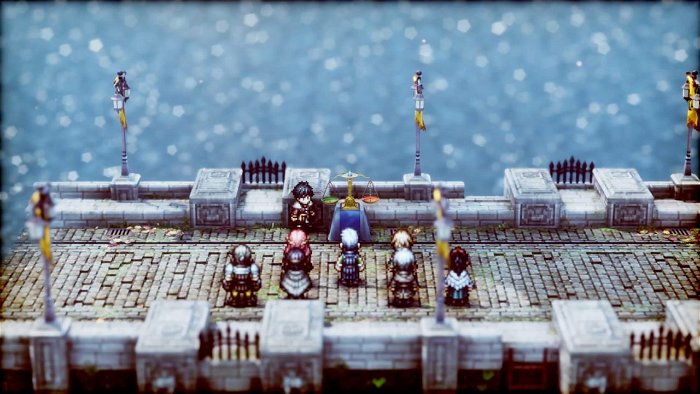
Now, this was before I learned that there was a NPC in your encampment—where players can buy items and upgrade units before battles—that allows you to do “mock battles,” in order to help prepare yourself for potential situations. Initially, I thought this was just for practice, to help players better understand the combat. I had no idea that these battles actually reward you with XP, Gold and potential items, so theoretically you could just grind away in these battles and completely imbalance the combat.
Triangle Strategy is also a bit mixed in the audio/visual department. Like I mentioned earlier, the voice acting is pretty unenthusiastic, and hard to sit through—unless you switch to Japanese—but the music is incredible; with every song arranged with what sounds like a live orchestra, and every stage and battle having different themes.
“While playing Triangle Strategy, I wondered if maybe I was being unfairly critical towards it…”
Visually, the game looks great—with excellent environmental design, both functionally and visually; and each character is uniquely designed and surprisingly animated during dialogue scenes. Furthermore, the use of dynamic lighting; and bright, colourful particle effects gives the game a very distinct flair during battles, and even some dialogue scenes.
However, I’m not sure if the “HD 2D” really work in a game like this, where there’s very little movement and diverse atmosphere to create the depth, which helps sell the illusion. And even in combat, sometimes the position of the camera with the HD rendered objects blocks the character sprites, which can result in attacks playing out in obscurity. Also, and this might be something that just bothers me, but there is this really weird and noticeable artifacting around characters as they move, and most noticeable when you run around areas in the Exploration sections.
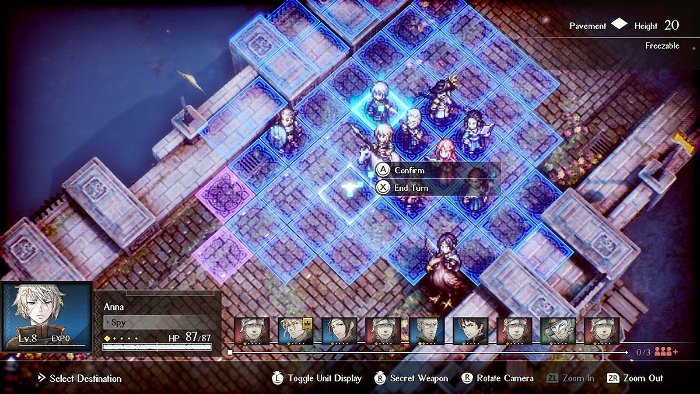
Furthermore, the HD 2D definitely falls very flat when playing in handheld, which seemingly outputs at 720p and makes everything look even flatter, and the simplistic animations make the combat, and certain moments in dialogue sequences feel very lackluster and underwhelming.
While playing Triangle Strategy, I wondered if maybe I was being unfairly critical towards it, since I do really like Fire Emblem and Wargroove. And it’s not even like I don’t like games with sprawling, complex narratives—I quite enjoyed the political intrigue in games like Mass Effect and Dragon Age. So I booted up Fire Emblem: Three Houses for comparison, and the difference really was night and day.
The dialogue feels organic, like it’s being spoken and not read. The game has the good sense to balance the story with gameplay—even earlier Fire Emblems put the dialogue segments before and after combat—and the combat feels balanced, since the game is built around it, so you’re prepared for every encounter; the challenge is more your own ability to strategize. And it’s more exciting since the attack animations are more dynamic. It knows how to balance the slower, methodical elements with exciting action and balanced gameplay.

But Triangle Strategy feels like: “Oops, All Exposition,” and while I did find myself enjoying it at times, I found myself glazing over far too often. It’s clearly got a big story to tell, but at the expense of all the other gameplay, and it ends up feeling more like a visual novel with some combat encounters, so it can technically be called a game. I’ve no doubt people will find something to enjoy here, but speaking for myself—as someone who genuinely likes turn-based strategy games—I’ve had to really push myself to enjoy it, and I don’t know how many people will.
